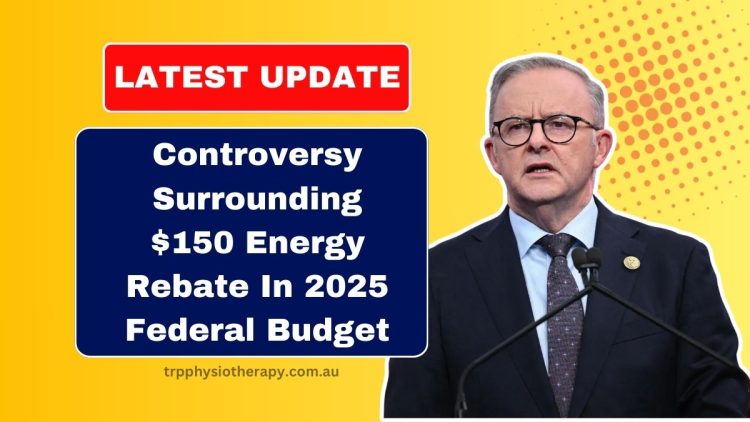In the lead-up to the 2025 Federal Budget, a controversial debate has emerged regarding the $150 energy rebate announced by the government.
Finance expert David Koch and other critics argue that the rebate should be means-tested, as high-income earners and wealthy Australians are set to receive the same rebate as low-income families struggling with energy costs.
With energy prices rising, the debate continues over whether the rebate should be distributed equally or better targeted to those who truly need it.
The $150 Energy Rebate: A Quick Overview
The $150 energy rebate is part of the government’s effort to ease the cost of living pressures faced by Australians.
While this payment is being extended to households across the country, the fairness and efficiency of distributing it universally without considering income levels have raised concerns.
| Aspect | Details |
|---|---|
| Rebate Amount | $150 per household |
| Eligibility | All households, including high-income earners |
| Payment Method | Automatically applied to electricity bills |
| Distribution | Paid in two quarterly instalments of $75 |
| Controversy | Concerns about wealthy Australians receiving the rebate |
| Potential Solution | Means-testing for better targeting of the rebate |
The Call for Means-Testing
David Koch, a finance expert and contributor to Yahoo Finance, has expressed concerns over the fairness of the rebate distribution.
According to Koch, high-income earners and wealthy Australians should not receive the rebate, as they do not need it. He argued that the $1.8 billion allocated for the rebate could be better spent on low-income households who are genuinely struggling with rising living costs.
He compared the rebate to existing means-tested programs, such as childcare subsidies, which adjust based on income. Koch suggested that a similar household-income benchmark could be applied to the energy rebate.
| Concern | Details |
|---|---|
| Who Should Get the Rebate? | Low-income families who need it most |
| Current System | Universal application for all households |
| Proposed Change | Means-testing to allocate funds to those in financial hardship |
| Impact | Increased fairness, ensuring those in need benefit most |
Energy Price Increases and Their Impact
Energy prices have been rising significantly across Australia. According to the Australian Energy Regulator (AER), households in NSW, South Australia, and South East Queensland could face increases in their power bills ranging from 2.5% to 8.9%.
Some regions may see rises as high as $200 per year, putting further strain on already struggling households.
| Region | Price Increase |
|---|---|
| NSW, South Australia, SE Queensland | Energy bills could rise 2.5% to 8.9% |
| Victoria | Average rise of 0.72% for typical users |
| Small Businesses | Rise between 4.2% and 8.2% |
How the Energy Rebate Works
The $150 energy rebate will be automatically applied to electricity bills in two quarterly instalments of $75 each. Unlike other forms of government assistance, the rebate is not means-tested, meaning it will be provided to all eligible households, regardless of income.
The first payment will be made in July 2025, followed by the second instalment in October 2025. This approach mirrors the previous $300 energy rebate, and has raised concerns over the distribution to wealthy households who may not need financial assistance.
| Payment Details | Information |
|---|---|
| Total Rebate | $150 per household |
| Instalments | Two quarterly instalments of $75 each |
| First Instalment | Available from July 1, 2025 |
| Second Instalment | Available from October 2025 |
| Eligibility | All households, including high-income earners |
Arguments Against the Current Rebate Plan
Critics argue that the current rebate system does not reflect the realities of the economic climate in Australia. Independent figures such as Jacquie Lambie have voiced concerns that vulnerable families and individuals who rely on electricity hardship programs should receive more support.
The government’s one-size-fits-all approach might leave some families without enough help to cover their increased energy costs, especially with the expected $200 price hikes in some areas.
The main issue lies in the lack of targeting of the rebate, which, while well-meaning, fails to directly address the specific needs of households facing the highest cost pressures.
The $150 energy rebate remains a controversial topic as the government continues to allocate resources for cost-of-living relief.
While the rebate will certainly provide some help to Australians across the country, the lack of means-testing raises questions about fairness, especially in light of rising energy prices and the growing financial strain on vulnerable communities.
As calls for more targeted assistance grow, the debate over how best to distribute the funds continues to shape Australia’s energy policy.
FAQs
Who is eligible for the $150 energy rebate?
The rebate is available to all households in Australia, regardless of income, and will be automatically applied to electricity bills.
When will the $150 rebate be applied to my electricity bill?
The first instalment of $75 will be paid in July 2025, with the second instalment paid in October 2025.
Why should the rebate be means-tested?
Critics argue that wealthy Australians should not receive the rebate, and that the funds should be redirected to those in genuine need, such as low-income families.

